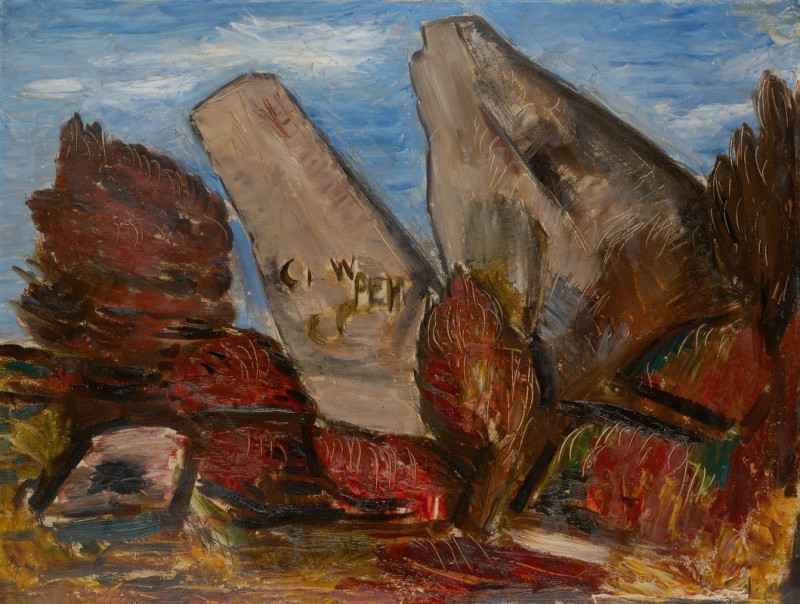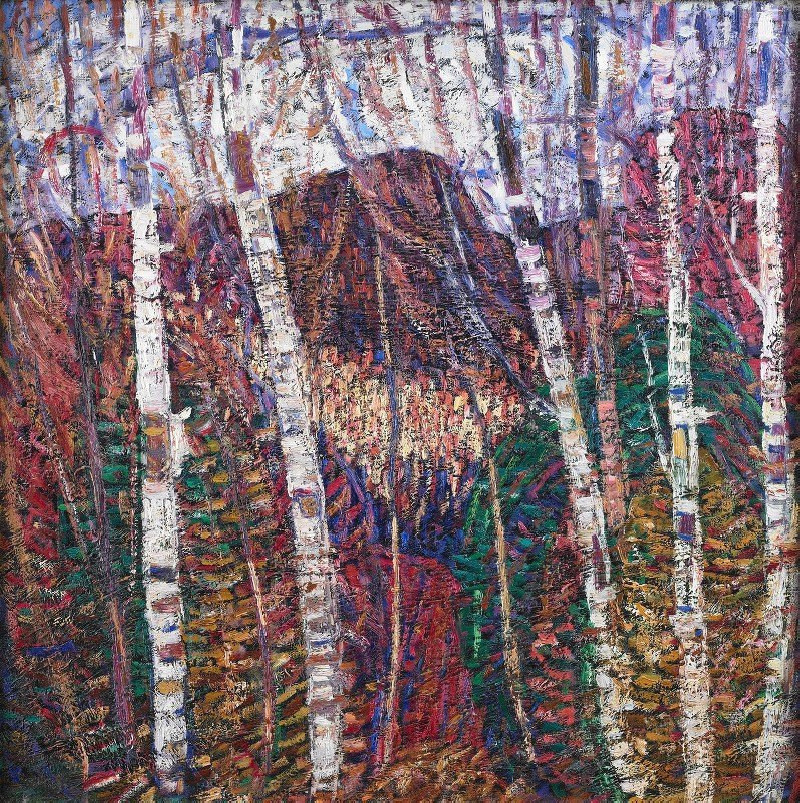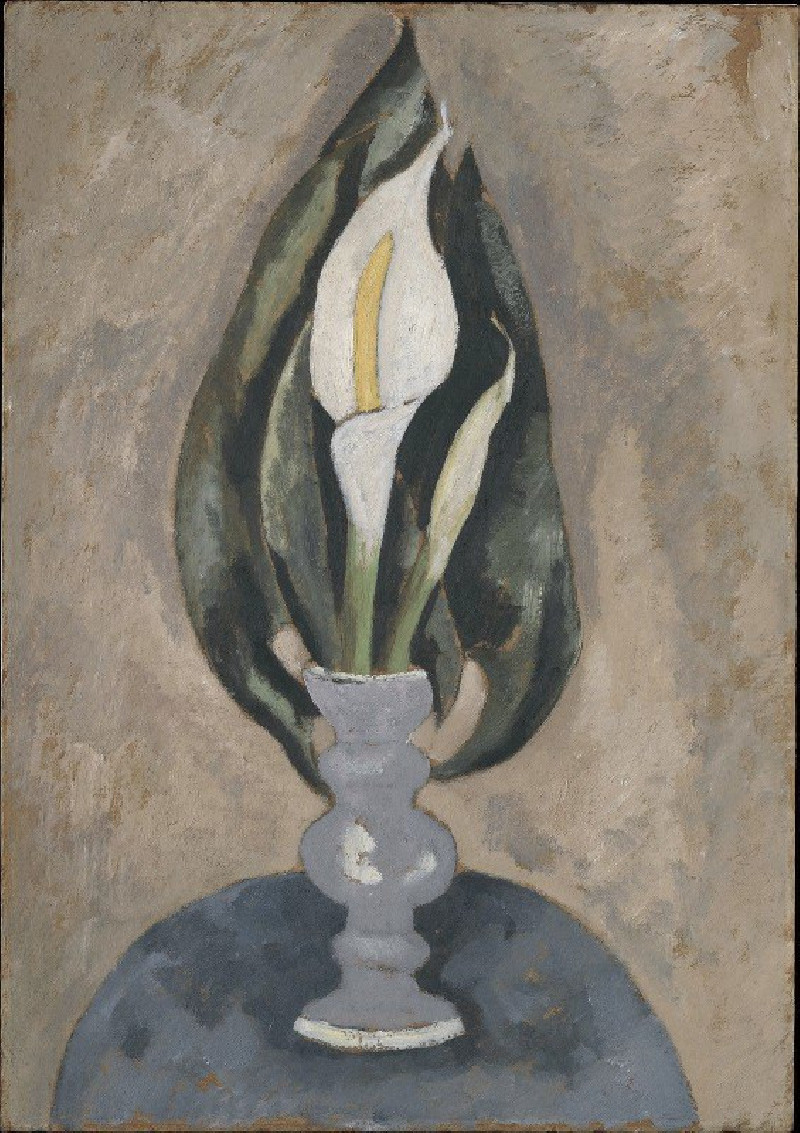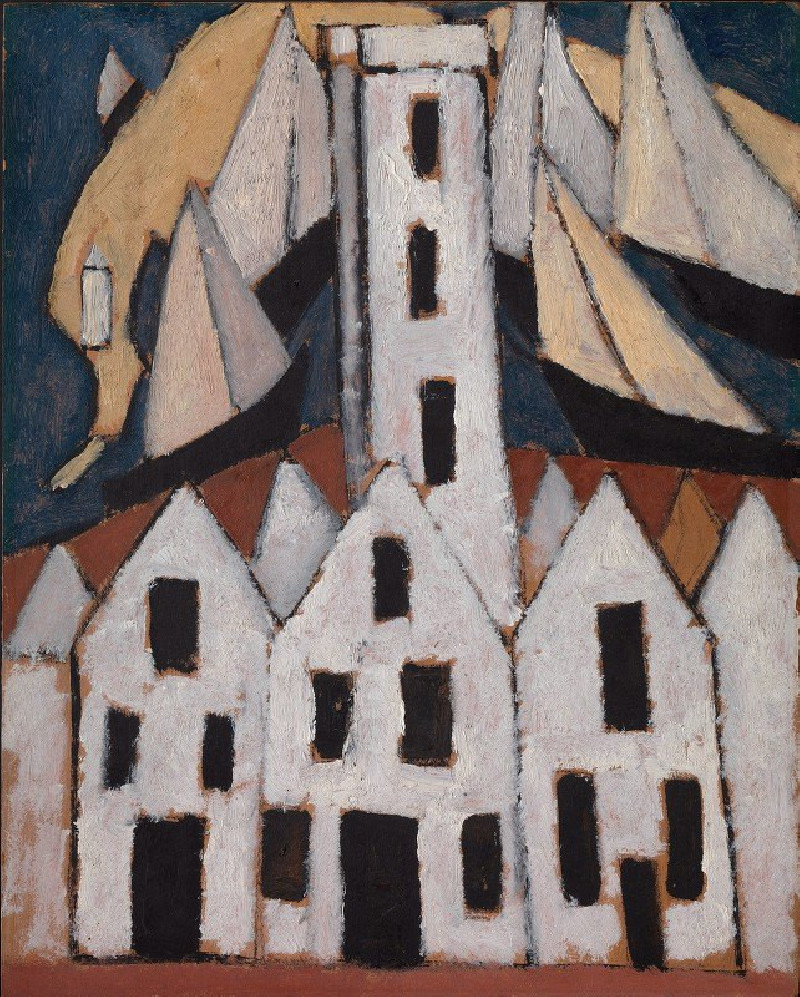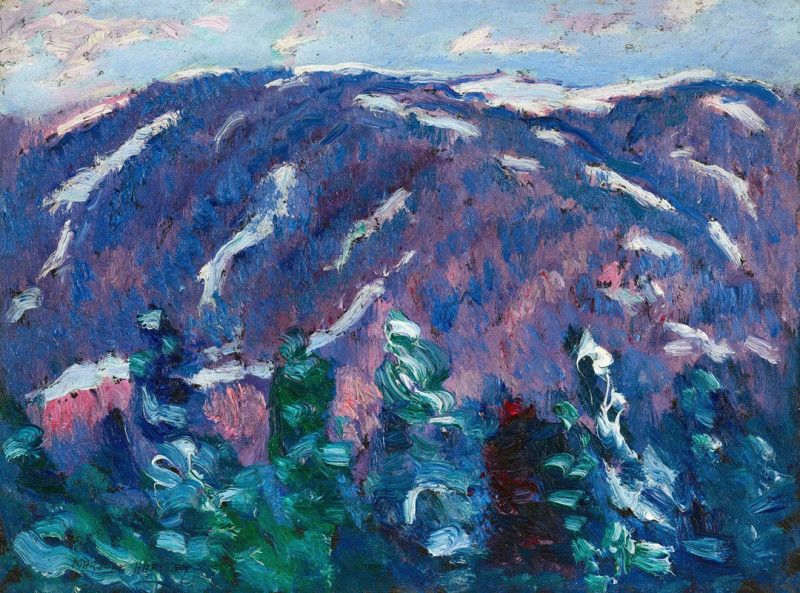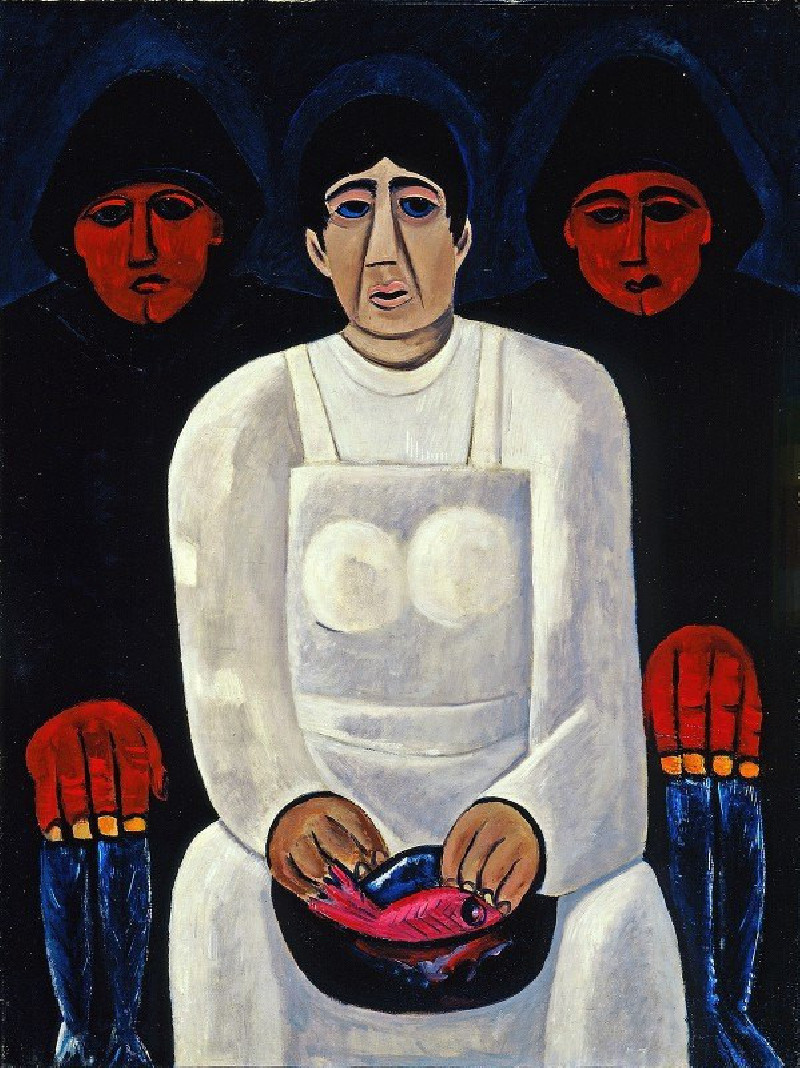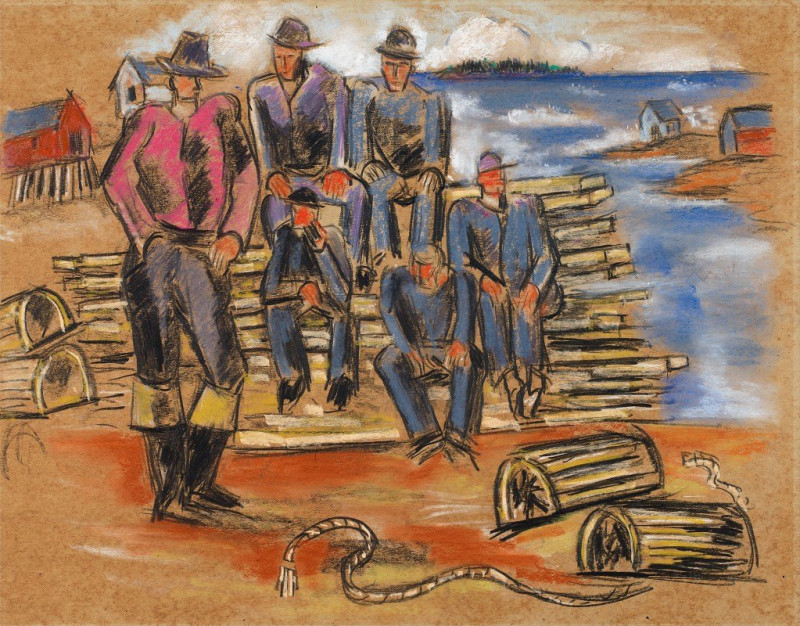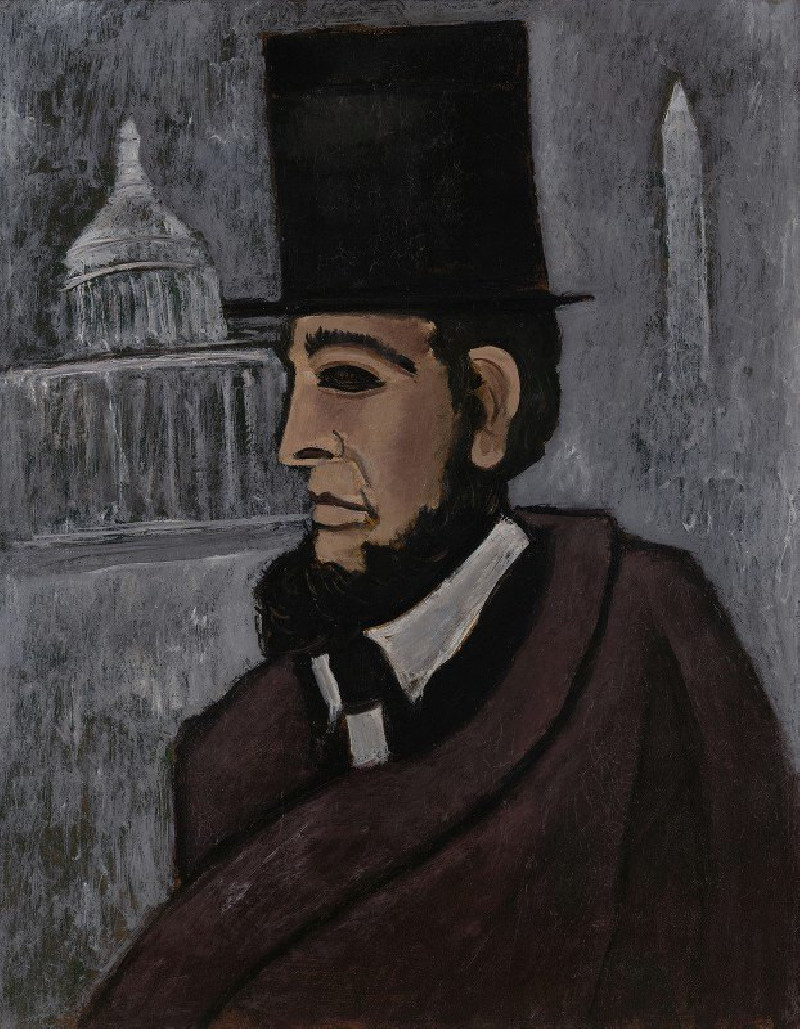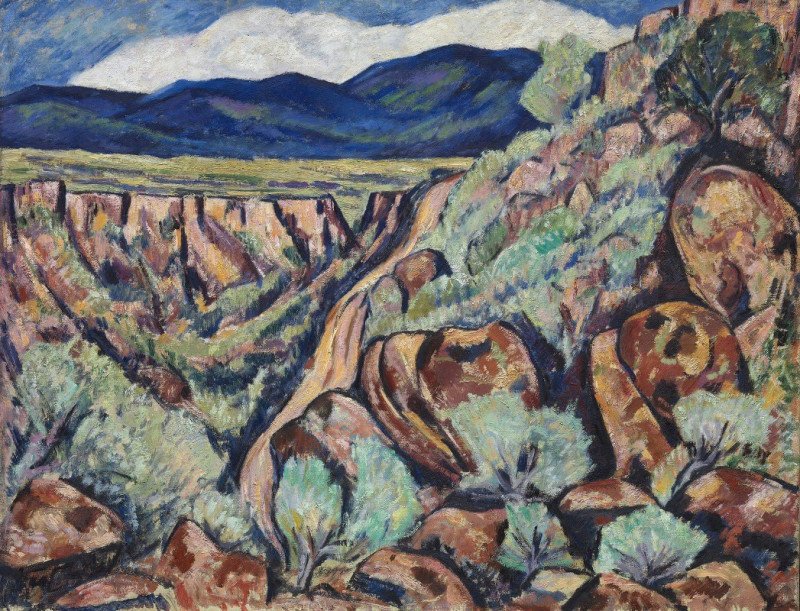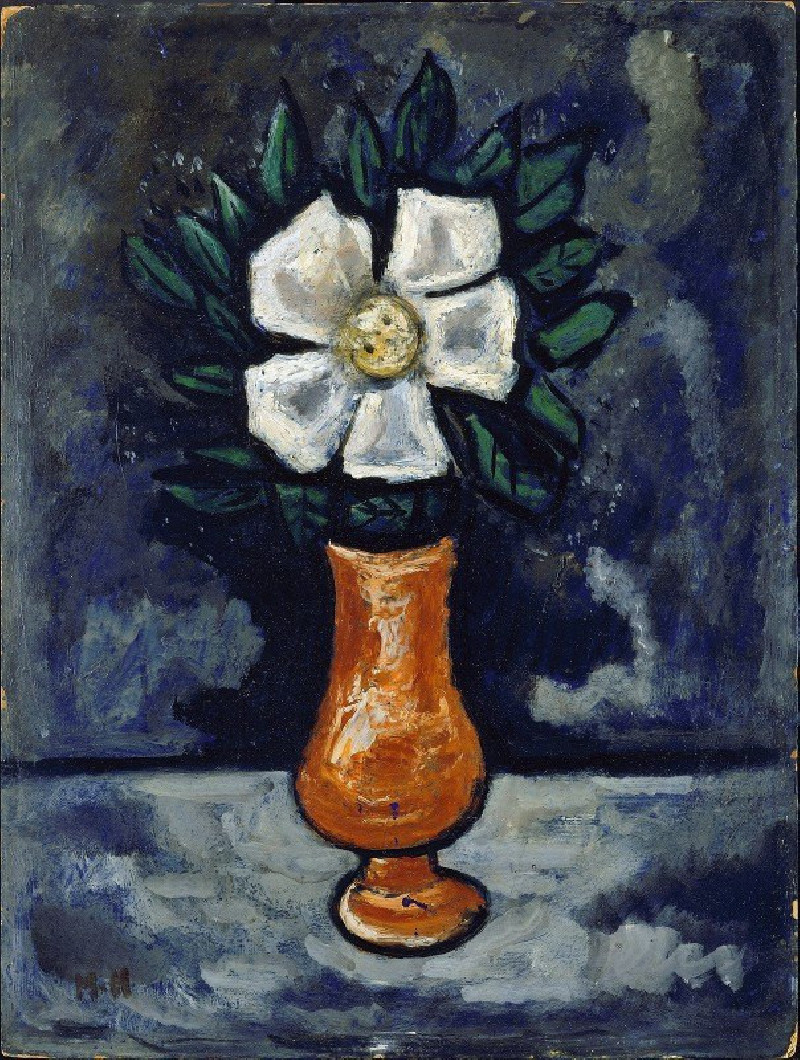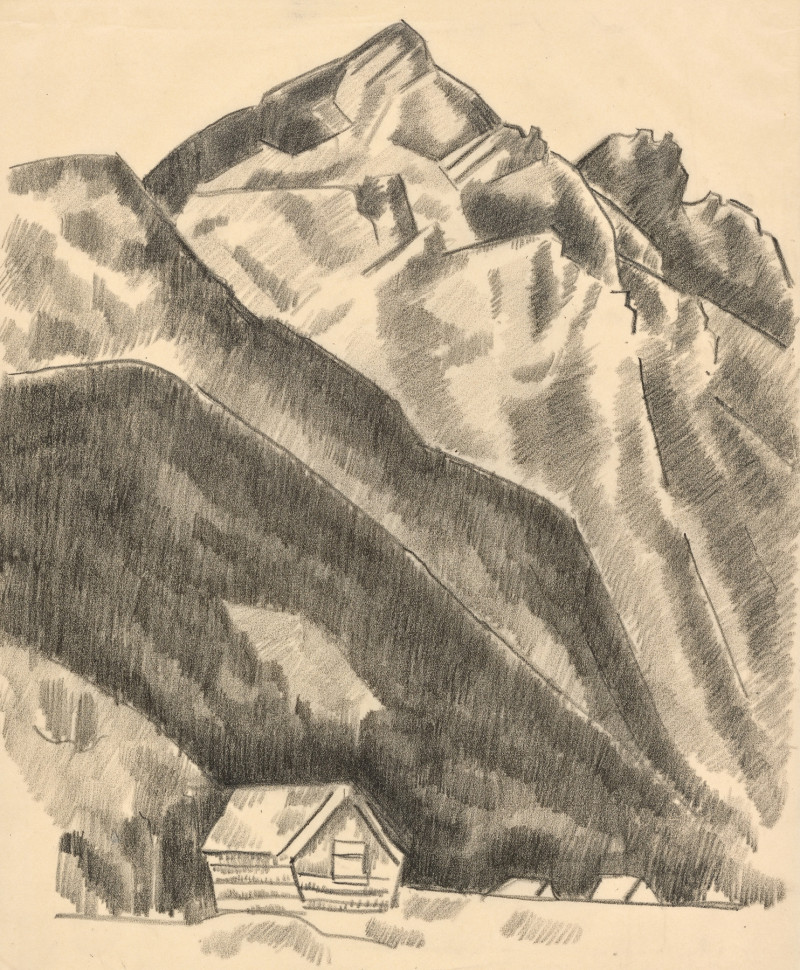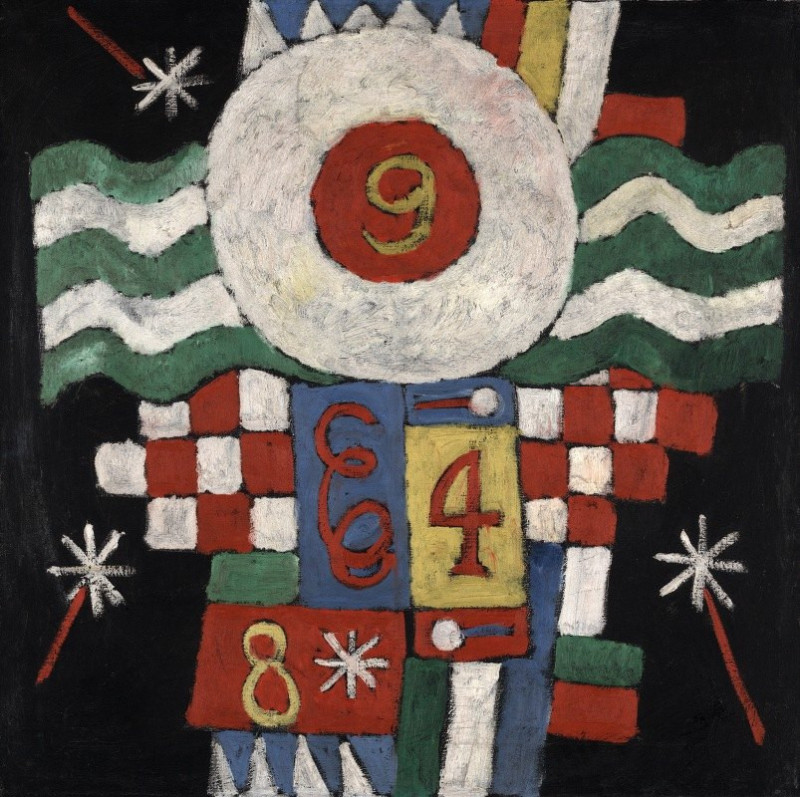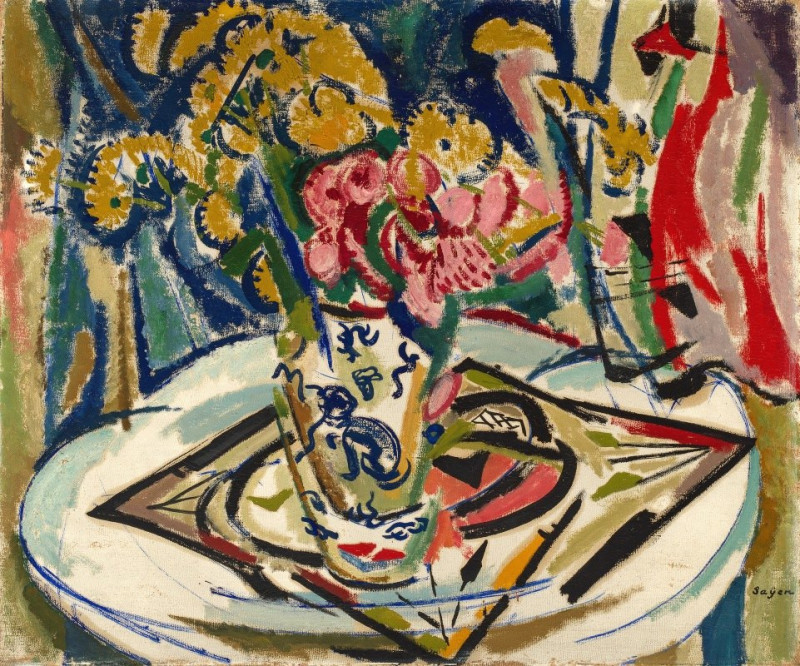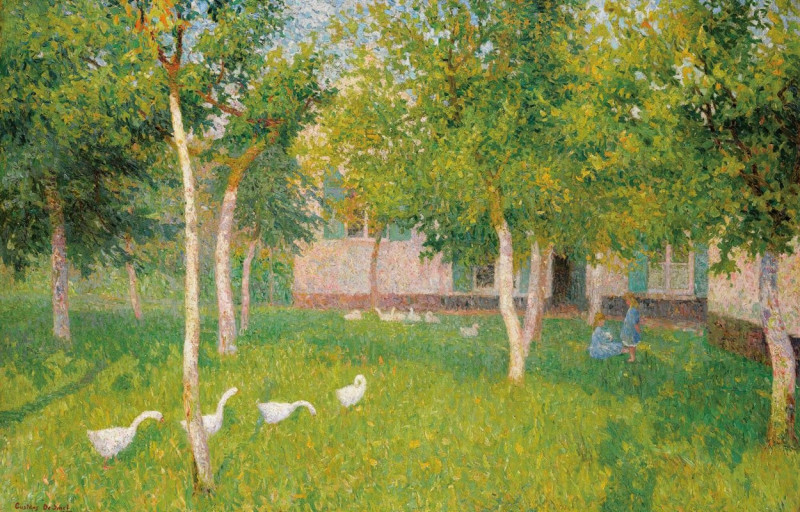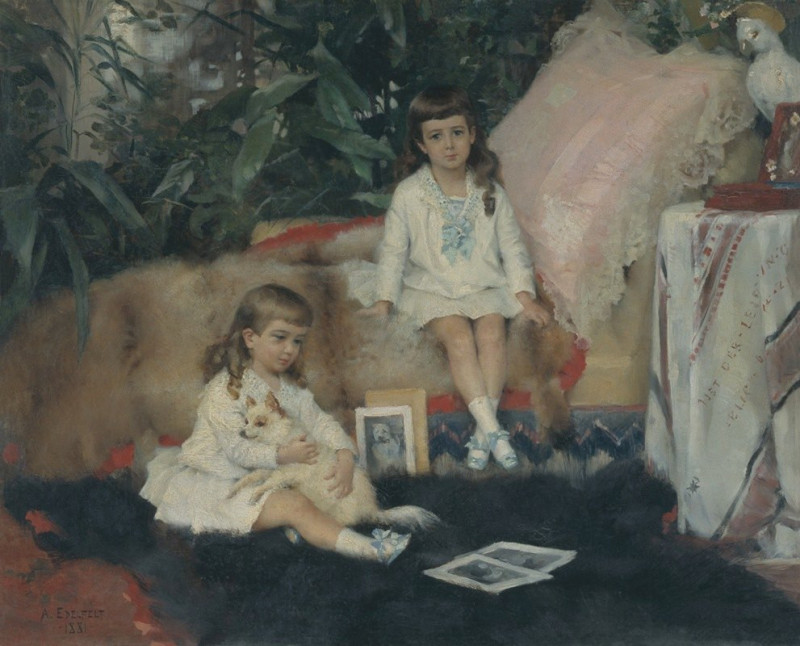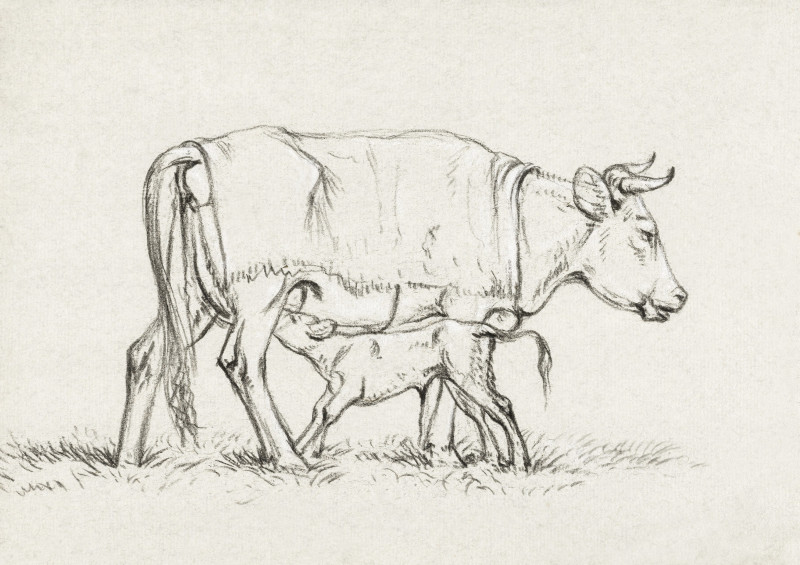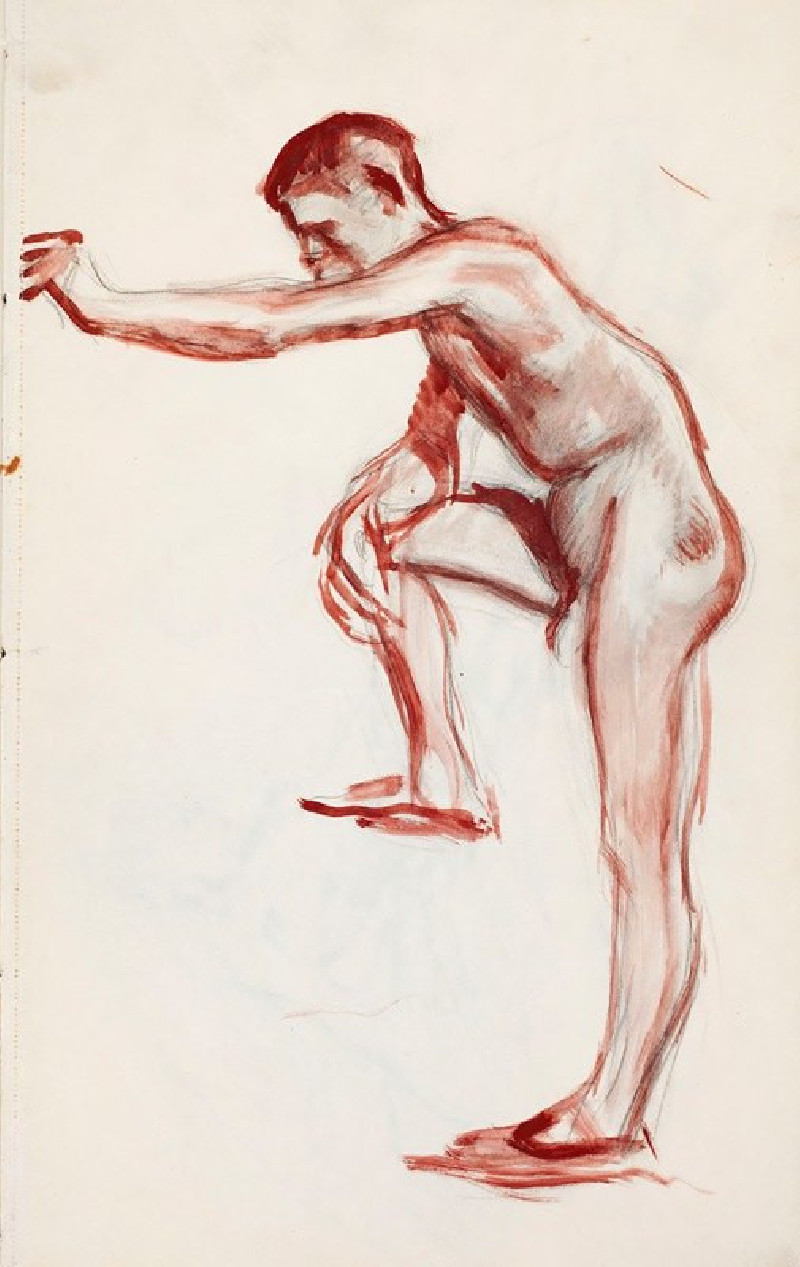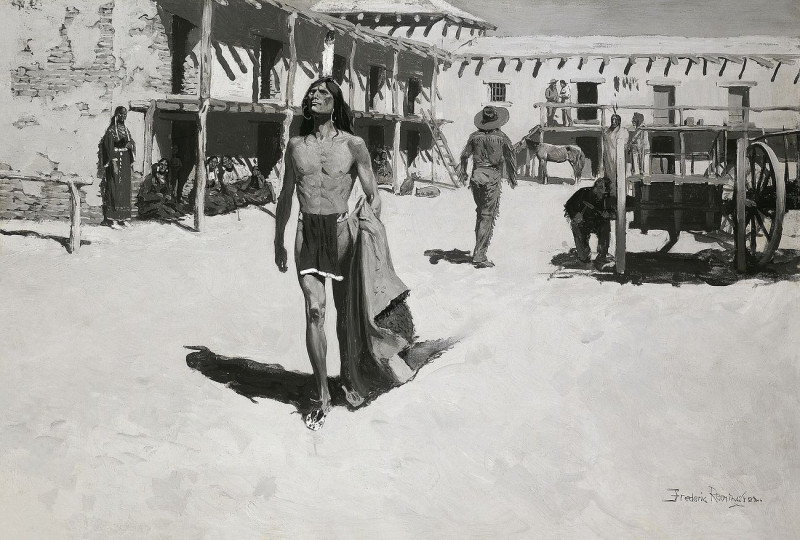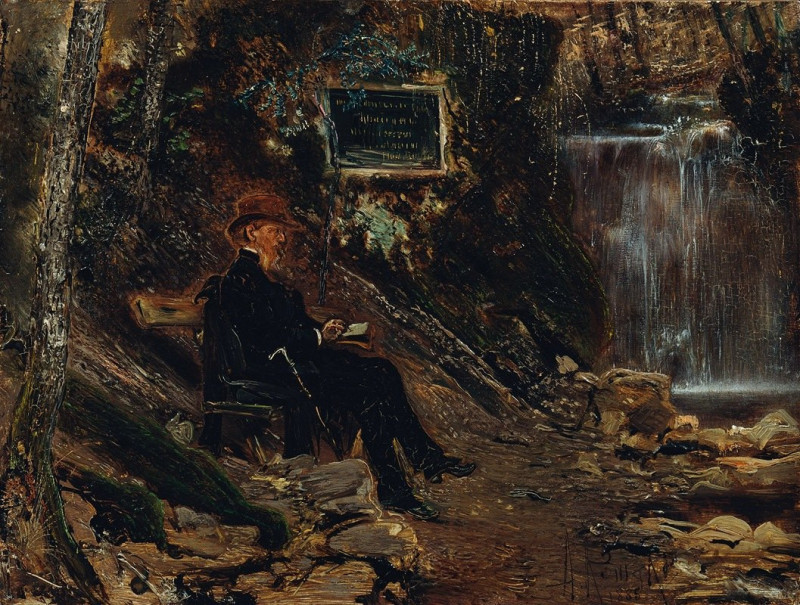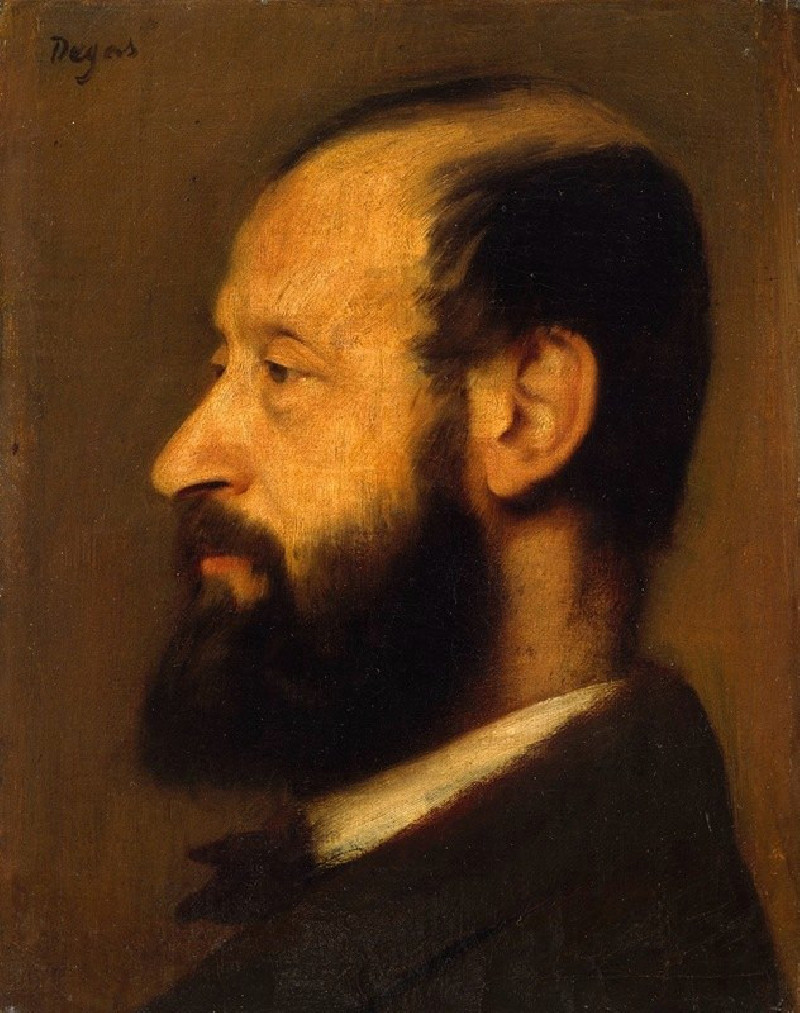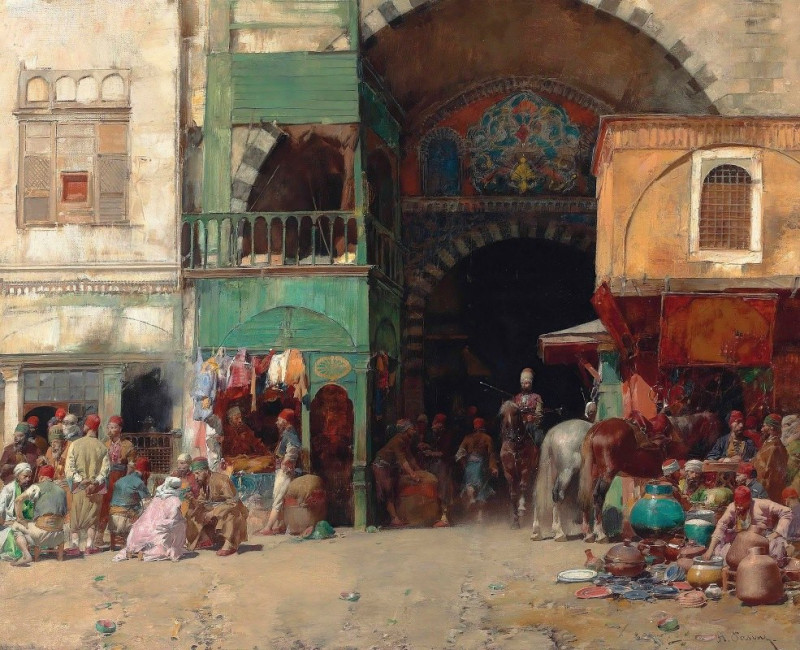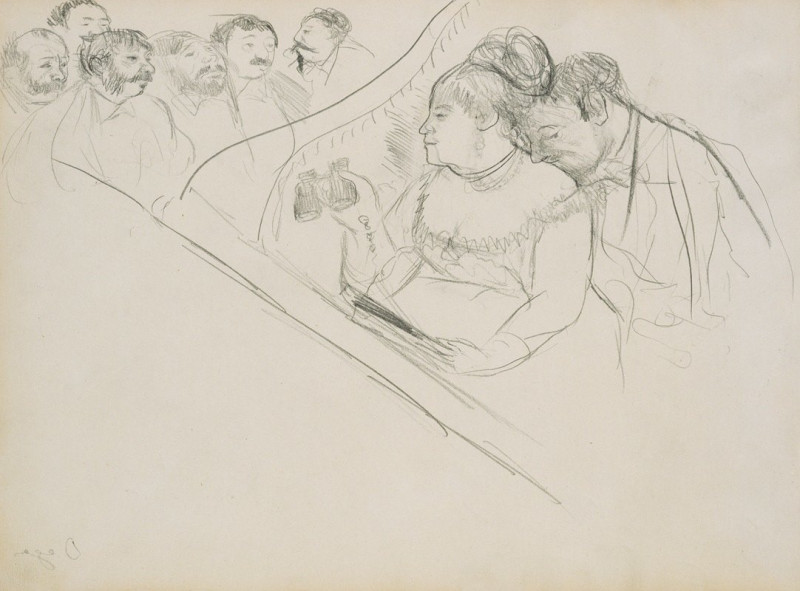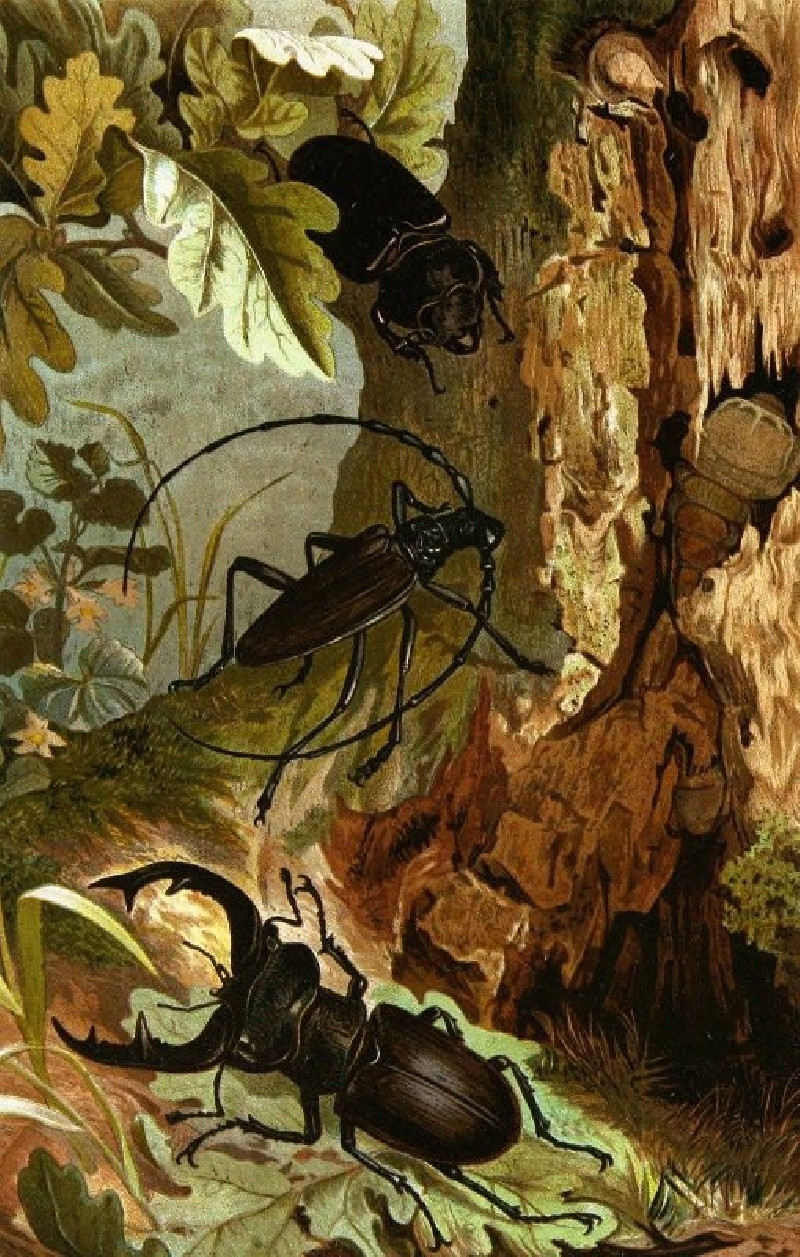Whale’s Jaw, Dogtown Common, Cape Ann, Massachusetts (1934)
Technique: Giclée quality print
Recommended by our customers
More about this artwork
Marsden Hartley's 1934 painting, "Whale’s Jaw, Dogtown Common, Cape Ann, Massachusetts," captures a fascinating blend of naturalism and abstraction, characteristic of his unique artistic style. This striking work features the remains of what was known as the Whale’s Jaw—a massive, naturally formed boulder that, until its collapse in 1989, resembled the open jaws of a whale.Hartley utilizes thick, expressive brush strokes to convey the rugged texture and monumental presence of the boulder. The landscape around it is rendered with vibrant reds and deep browns, possibly reflecting the dramatic changes of seasons in New England. Streaks of white and yellow in the boulder suggest light reflecting off its surfaces, adding a dynamic quality to the static subject.The sky above the rocky formation is depicted in broad strokes of blue and white, suggesting a windy, lively atmosphere, which contrasts with the solid, enduring form of the boulder. Beside it, dark, tree-like figures bend and sway, emphasizing the forces of nature acting upon this secluded landscape.Through "Whale’s Jaw," Hartley not only documents a significant natural landmark in Cape Ann but also delves into the themes of permanence versus impermanence, and the relentless passage of time. Like much of his work, this painting invites viewers to contemplate the deeper spiritual connections between the land and its history.
Delivery
Returns
Marsden Hartley (1877–1943) is a Maine native and a leading American Modernist painter, along with his contemporaries, Arthur Dove and Georgia O’Keeffe. He is well-known for employing geometric abstraction as well as bold colors and lines. His paintings depicted imagery of nature, landscapes, figures, and still-life. Sponsored by Alfred Stieglitz, Hartley went to Europe in 1912, spending most of his time in Germany, where he met Gertrude Stein, Wassily Kandinsky, and Franz Marc. After returning to America in 1930, he reconnected with the New England of his childhood and started to portray the landscapes of New England in his paintings.

